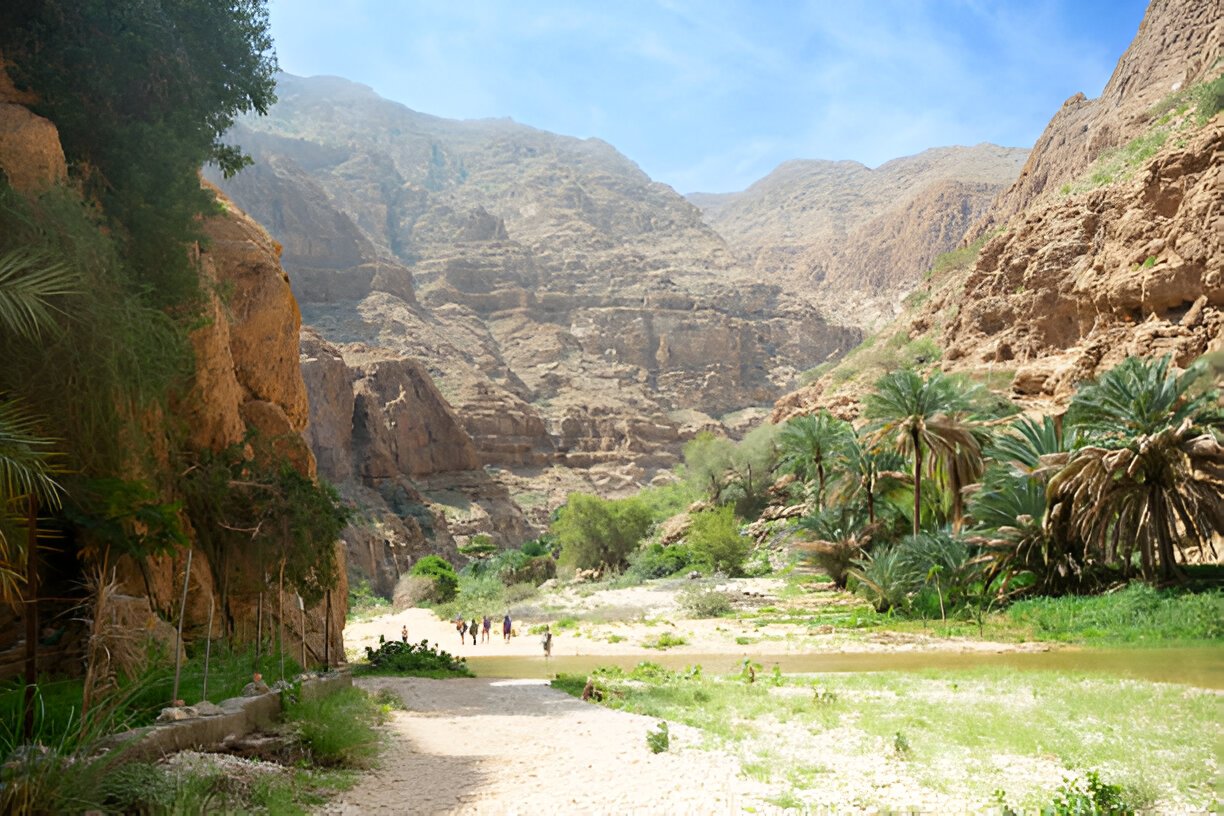
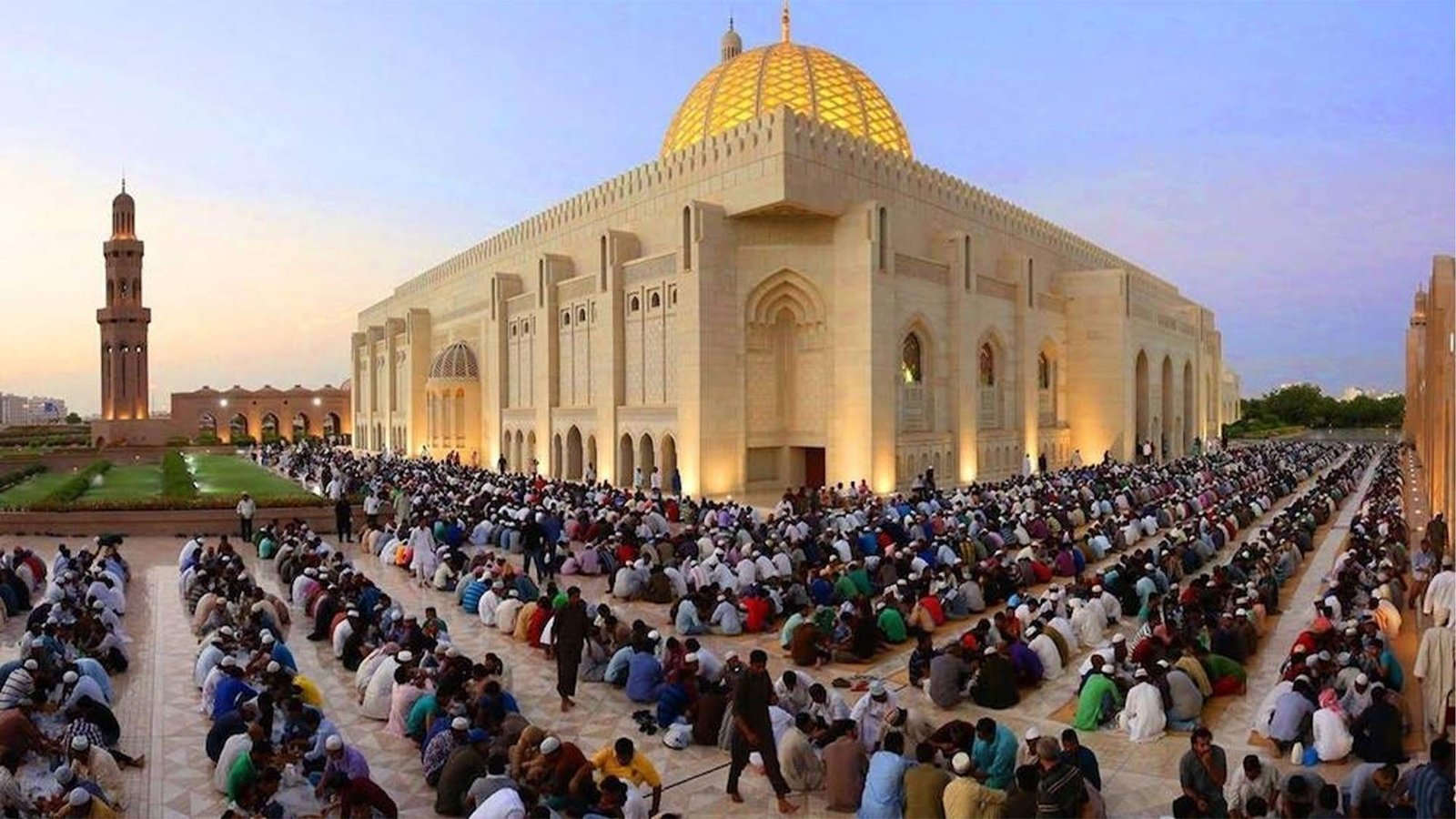
In Oman, a land steeped in tradition with deep cultural roots, celebrates well during these two most important occasions within the Islamic calendar, namely Eid al-Fitr and Eid al-Adha. For Omanis, these festivities are not merely about complying with religious obligations but also about fulfilling our duty as members of society, connecting us all in happiness, and preserving precious traditions from generation to generation.
Having been raised within these festivals, I can say with certainty that excitement and anticipation begin long before the moon is seen. From the vibrant markets to enthusiastic families making preparations for this joyous season, it seems as if an entire country is abuzz with energy. But what is so special about Omani Eid celebrations? Join us as we explore the traditions and culture of Eid in Oman.
One of the surefire ways to witness Omani Eid celebrations in the truest form, where the favor of Allah is bestowed, is to understand what Eid means and why it is celebrated. Generally, there are only two main Eids in the Islamic calendar: the Eid al-Fitr and the Eid al-Adha. Yet, each of them impacted the formation of the Muslim nations in the world.
Eid al-Fitr, dubbed the “Feast of Breaking the Fast” is the last day of fasting, which is a way of showing that the habitual oppression and gain without paying prices have to go and be replaced with the new culture of living mutuality. The holiday is characterized by profound the feelings of thanks, elements of which include giving thanks for the strength to successfully fast the past month, and seek forgiveness and favor for the coming year. The catholicity of Eid al-Fitr is incredible, also is remarked in the liveliness of Omani Eid celebrations
Eid al-Fitr is a time of profound reflection and community, where the lessons of Ramadan are celebrated with joy and gratitude.
Omanis have celebrated Eid al-Fitr for hundreds of years creating their own special way to observe this holiday. As Ramadan ends, people feel excited. The new moon sighting, which marks the start of Eid, brings happiness and relief to many. It ends a month of fasting, which aims to help people grow, practice self-control, and understand those who have less.
In Oman, people get ready for Eid al-Fitr days before it starts. Families tidy and spruce up their homes, shoppers crowd markets to buy new outfits, and cooks make special foods to eat after morning prayers. These customs play a key role in Omani Eid celebrations. They show both the spiritual meaning of the event and the rich culture of the country.
Omani Eid celebrations stand out due to their special customs. Families in Oman rise on Eid al-Fitr morning to take a ritual bath called “Ghusl” before putting on their finest attire often bought for this event. People fill the streets as they head to the mosque for the special Eid prayer, which begins the day with a sense of unity and a chance to reflect.
The morning of Eid al-Fitr in Oman is a symphony of spirituality and joy, as families come together, dressed in their finest, to welcome a day of blessings.
The practice of “Eidiya” forms one of the most touching parts of Omani Eid celebrations. This custom involves giving kids small sums of money or presents, which they can’t wait to receive. It symbolizes blessings and happiness, and watching the kids’ faces light up is special.
The festivities continue after the prayer with trips to the homes of family and friends. These visits in Oman mean more than just social calls—they play a key role in the community spirit that characterizes Omani Eid celebrations. It gives people a chance to reconnect, eat together, and express good wishes. The Omani people’s kindness and welcoming nature shine through making it a time of closeness and shared joy.
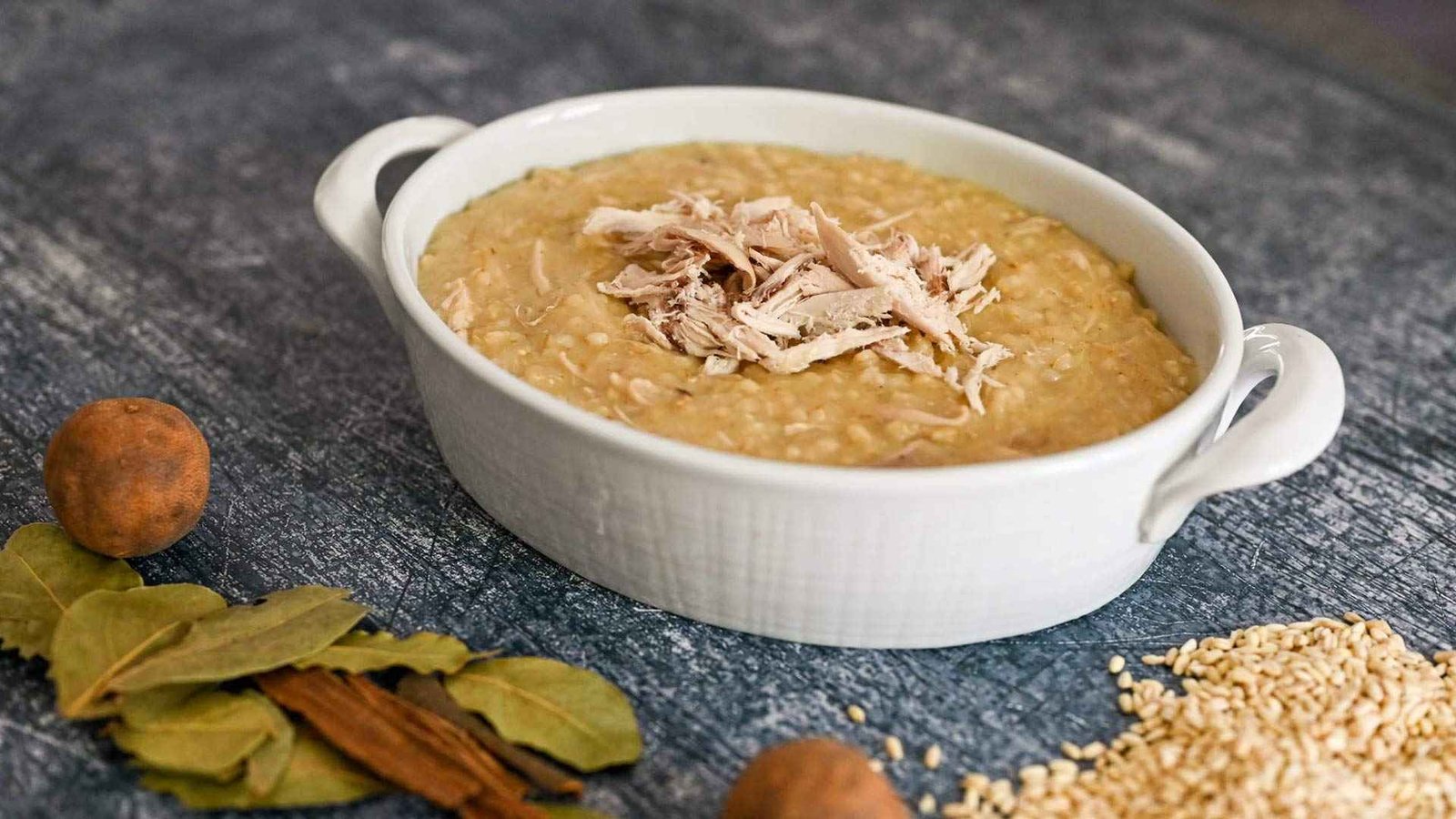
Let’s dive into the food—the main attraction of Omani Eid celebrations that gets everyone excited. Eid ul-Fitr is a feast, it’s in every sense of the word. After fasting for a month, the day the fast ends is called the feast (Eid), and it is celebrated with a variety of Omani dishes. These dishes are not only delicious, but they also have great symbolic significance.
“Shuwa” is for sure the main course of the party. This particular Omani traditional dish gets its texture and aroma from the marination of the lamb with various spices. This marinated lamb is then wrapped in banana leaves and cooked slowly in underground sand over a period of 24 hours. The end result is soft, meaty, and full of flavors, such that it almost melts on your tongue. This is a dish that needs time and care exactly like the values that are expressed during Eid.
Of course, the food offered at the festival is not limited to this course. “Harees,” a dish made from wheat and meat, is the major taste of Omani Eid celebrations. It is comfort food at its highest, which is why it is often prepared with patience and savored with one’s immediate family. “Ma’jboos,” a delicious and spiced rice dish usually consumed with meat or chicken also accompanies the party. It gives a heavenly taste of the richness of flavors that Omani cuisine is aphorized to offer.
Apart from that, what could be an Eid occasion without something sweet? The “Omani Halwa” a sweet prepared from sugar, rosewater, saffron, and nuts is a complete must during the Omani Eid celebrations. It is both an excellent finisher and a victor rendering an enduring sweetness that celebrates the occasion.
Omanis call Eid al-Adha the “Greater Eid.” This festival plays a key role in Omani Eid celebrations. It embodies sacrifice, charity, and community—core values in Islam and Omani life.
In Oman, Prophet Ibrahim’s readiness to sacrifice his son means more than a religious story; it teaches about obeying, believing, and giving back. Eid al-Adha customs show this, as the sacrifice stands for dedication and kindness.
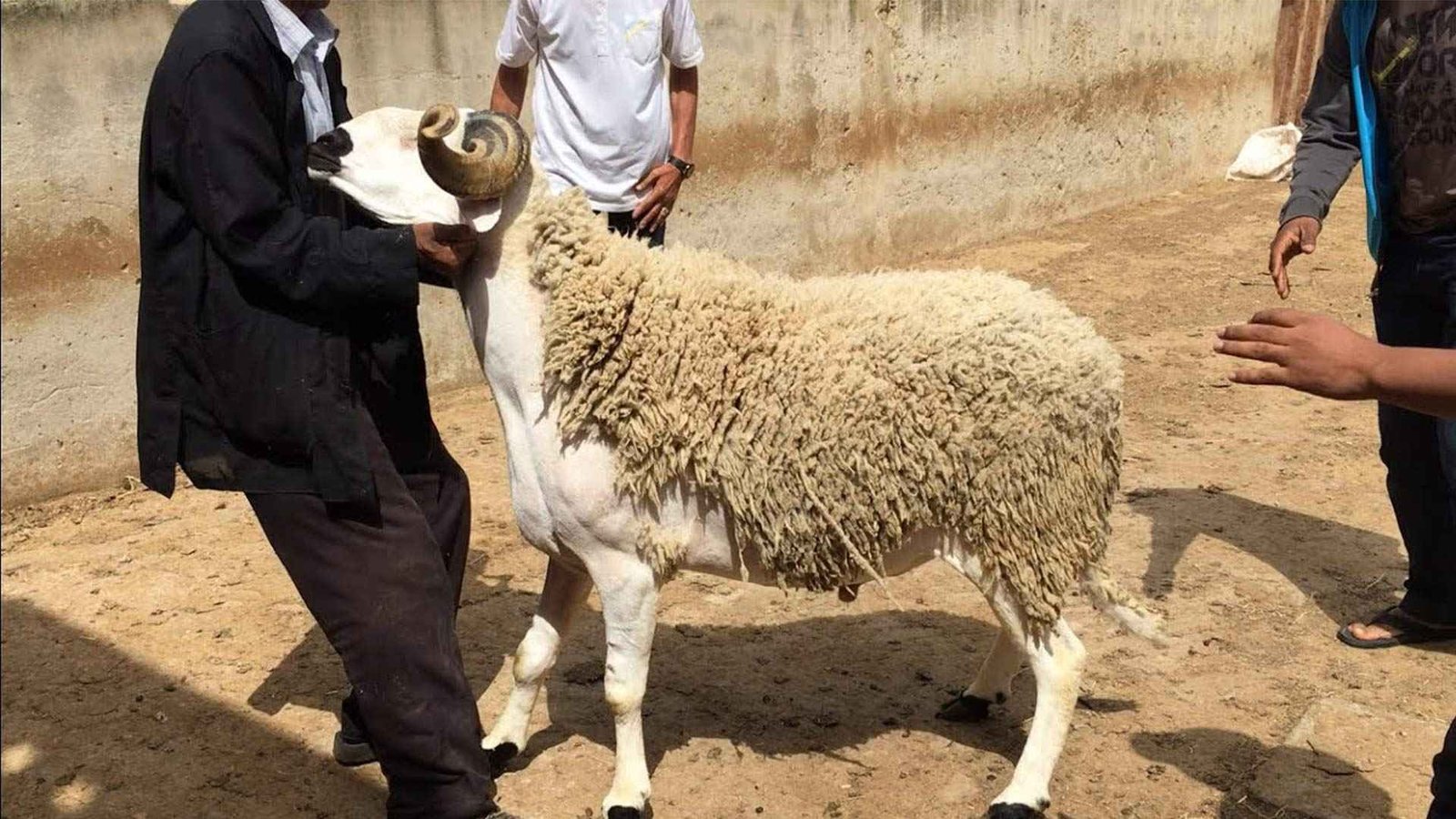
The sacrifice stands as the most important part of Omani Eid celebrations during Eid al-Adha. On Eid morning, after the special prayer, families gather to sacrifice an animal—a goat, sheep, or cow. People perform this ritual with deep respect, and split the meat into three equal portions: one for the family, one for relatives and friends, and one for the poor and needy.
The act of sacrifice during Eid al-Adha is not just a ritual; it is a profound expression of faith and community responsibility.
Eid al-Adha is a time where donating becomes a significant part of the Omani Eid celebrations. A lot of Omanis use this time to help their communities, through gifts to charities, food for the hungry, or lending a hand to neighbors. This feeling of duty to society runs deep in Omani culture, and parents teach it to their kids, who then pass it on to their own children.
Eid al-Adha is a time when the spirit of generosity is at its peak, as communities come together to ensure that everyone shares in the blessings of the festival.
What pops into your head when you think about Omani Eid celebrations? Do you picture people praying together sharing special meals, or families and friends getting together to have fun? In Oman, Eid means all these things and even more. It’s a time that brings the whole country together to celebrate as one.
Oman’s Eid customs have roots in long-standing traditions. The sighting of the new moon kicks off Eid leading to group prayers in mosques and outdoor areas. These practices aim to encourage worship, to reflect, and to express thanks. Yet Omani Eid celebrations go beyond just religious duties. They also involve enjoying life’s simple joys—hanging out with family and friends eating tasty meals, and soaking up the festive spirit.
One of the prettiest parts of Omani Eid celebrations is how they bring people together. During Eid, families stop by each other’s houses, give good wishes, and eat together. These visits aren’t just about being social; they help to build stronger connections, make family bonds tighter, and make sure everyone gets to join in the fun.
Want to experience the Omani Eid Celebrations? A few places in Oman really light up. The capital area, Muscat, at this time gleams with life. Worshippers overflow in the city’s mosques while endless crowds throng the markets that twinkle with lights where one can buy new clothes and gifts for their loved ones. All these make Eid in Muscat a very vibrant and exhilarating affair, which otherwise is an excellent opportunity to experience the aura of warmth and hospitality amongst Omanis.
Salalah, situated in the Dhofar region. The other must-visit during Eid is known for its striking landscapes and cool weather that create a unique fusion of Arabian and African cultural effects. Music and dance performances during Omani Eid celebrations in Salalah are very traditional, offering an ideal opportunity for any visitor to soak up some local culture. No matter who you are—a resident or a traveler—celebrating Eid in Salalah will be an unforgettable memory.
But Eid in Oman is not only for the larger cities. In small towns and villages, Omani Eid has a much smaller, more community-based celebration. It is all about the family and the tradition of coming together, but each group has its unique way of celebrating. Life at these places is highly communal. The amount of warmth and hospitality one experiences is great.
Looking forward to the Eid celebrations, the entire Oman is busy making preparations for Eid. The Omani society is geared up for a series of happenings that will make the celebrations even more vibrant and joyful. Traditional music and dance performances, as well as exhibitions displaying Omani crafts and cuisine, are the highlights of these events, which in turn serve as a gateway to the country’s mighty cultural heritage.
There will be a grand Eid prayer at the Sultan Qaboos Grand Mosque in Muscat, followed by a community gathering, where people will enjoy together the joy of Eid. The city’s markets will be crowded with buyers and sellers, offering everything from traditional Omani desserts to handmade crafts. Muscat is thus the preferred place for those who want to taste the most original Omani Eid celebrations.
As for Salalah, the annual Khareef Festival, which comes together with Eid, will be the avenue for visitors to be exposed to the unique culture of the Dhofar region. The festival showcases folklore music, dances, and food that would be an eye-opener for visitors to the local culture. Omani Eid celebrations in Salalah create an appetite for the senses with seemingly something to be pleased by each and every one.
However, the excitement doesn’t just stay there. From Oklahoma to Kabul, every town and village in Oman will host their own Eid events, from community feasts to traditional sports competitions. These activities offer a great way not only to understand the local culture but also to gain an idea of what Omani Eid celebrations are all about.
Eid prayers are a big part of the Omani Eid celebrations well and there are some main points in Muscat where these prayers take place. Sultan Qaboos Grand Mosque is one of the top places to pray in Muscat for Eid. Thousands of people come to this grand mosque every year, and its architecture is appealing, which attracts many devotees. It also serves as an excellent place for their Eid prayer.
However, this is not the only location for Eid prayers. Other renowned mosques, like the Al Ameen Mosque and even the Mohammed Al Areen Mosque, get hundreds of men hitting to perform Namaz. As for the congregation itself, they are not limited to mosques, and more open facilities such as parks or squares can be used where many people gather together. Eid prayers in Oman are a sign of togetherness and have become an indispensable element in the Omani Eid celebrations.
In Oman, the Eid activities highly regard Eid prayers. Eid prayers are performed repeatedly in a larger gathering, and are seen as an indicator of unity and integration among Omanis, When thousands dressed up officially gather together to deliver (the prayer, it becomes like a declaration of how strongly this value plays a part in Omani celebrating Eid.
The centerpiece of Omani Eid celebrations is, of course, the shining star: Shuwa. Preparing the meat, marinating it with a rich blend of spices, and then cooking it for hours in a sand oven buried 1.5 feet underground—this is no easy feat! The payoff, however, is meat so tender and juicy that it’s a tribute to the skill of Omani cooks. Shuwa is more than just a dish; it’s a ritual of preparing something special, a process steeped in tradition. The intention behind every step of its preparation can be tasted in every bite, making it a cornerstone of Omani Eid celebrations.
And the feast doesn’t end there. Harees, another must-have dish during Omani Eid celebrations, is made with wheat and meat. This multi-generational dish warms your insides and takes you back to family dinners as soon as each spoonful hits your taste buds. Harees is a dish that embodies the comfort and togetherness of Eid, making it a staple at any Omani celebration.
Mishkak, the most famous Omani kebab, has also become a must-eat among families during Omani Eid celebrations. Its spiced, grilled flavor adds a delightful kick to the lunch menus at family gatherings, making it a favorite across generations.
And then there are the sweets. During the Eid al-Fitr season, for example, nothing is more quintessential to a proper Omani Eid celebration than some good old Omani Halwa. This dish, rich in sugar, rosewater, saffron, and nuts, is often shared with house guests, reflecting the generous spirit of hospitality that is so deeply ingrained in Omani culture.
Omani Halwa is more than just a sweet treat; it’s a symbol of the hospitality and warmth that define Omani culture, especially during Eid.
The preparation of traditional dishes like Shuwa during Omani Eid celebrations is more than just about food; it’s about bringing people together. Making Shuwa is usually a communal activity, with the braising process sometimes taking as long as 24 hours. Families band together to marinate the meat and prepare the underground oven in which it will be cooked. It’s a time of togetherness and storytelling, with the ultimate goal of passing down traditions from one generation to the next.
But making Shuwa is just part of the feast. Specialties like Harees and Mishkak are also crafted with care and precision, each dish exemplifying flavors that have been cherished for millennia. These dishes are prepared with time-honored techniques that infuse the food with rich flavors, celebrating the traditions that define Omani Eid celebrations. They are a testament to the soulful oasis that is Omani Eid, where food is not just sustenance but a celebration of culture and heritage.
One of the most important aspects of Omani Eid celebrations is clothing, and for good reason—it offers us a rare opportunity to express our cultural heritage. Men usually wear a “Dishdasha,” the long white robe that is often combined with a white Muzzar (turban) or Kumma (cap). This elegant yet comfortable wear is perfect for such a festive occasion during Omani Eid celebrations.
Women celebrate Omani Eid celebrations in dresses with some of the most intricate, beautiful embroidery work (the brighter and more festive, the better). These dresses, called “Omaniya,” are a testament to the beautiful tradition of this country. They blend traditional and modern fashion, as more members of younger generations have started integrating contemporary styles into their Eid outfits. This evolution is a manifestation of how Omani Eid celebrations have evolved with time through changing fashions.
Another essential part of the Omani Eid celebration is gift-giving, which allows people to show love and gratitude. Gifts are often presented in the the form of sweets, perfumes, and jewelry; building up to include culturally orientated presents. During the Omani Eid celebration, Bukhoor is a widespread gift with a touch of warmth and hospitality.
Gift-giving is a beloved tradition in Oman and one that has been practiced for generations. They said it is common in Omani Eid celebrations for relatives and others to send and receive gifts among themselves, as an expression of love between them. The tradition of giving children “Eidiya” small sums of money only adds to the thrill and joy associated with the occasion.
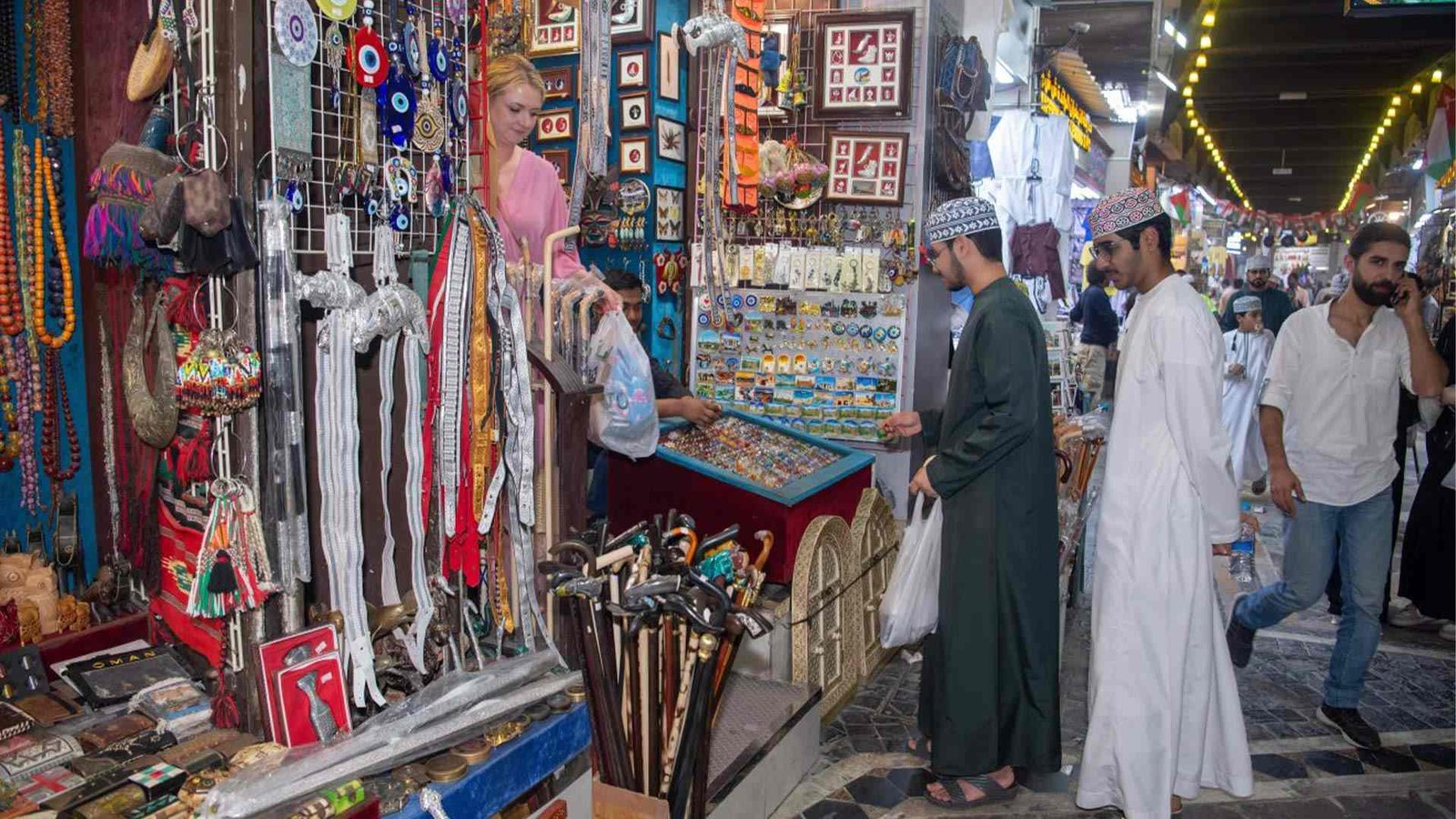
Those who wish to purchase Eid gifts, Oman has several shopping options. For the most authentic local lifestyle and souvenirs, head to traditional markets such as Muttrah Souq for unique finds that represent Omani culture, including handmade silver jewelry pieces available or locally made traditional weaved fabrics. The souq is filled with a vast array of Omani wares, and exploring it is almost like traveling through old Oman.
Modern malls are popular for a variety of contemporary products including luxury perfumes and designer watches. It’s those malls which attracted the masses who were hoping to complete their gift-buying spree for family and friends during Eid as its celebrated in Oman. Oman has all from traditional to now a day style of shopping which caters every taste.
Traditionally Omani Eid Celebrations are a lively and touchy part of daily life in Oman. From the communal prayers to the celebratory meals and gift-giving, every part of these commemorations reflects our country’s cultural mosaic. Oman is therefore a unique world, and something you should explore during Eid if the festivals are appealing to you.
These festivities are not merely religious observances but reflect the values, traditions, and social spirit that Oman is built upon. With Eid al-Fitr being waited for the same excitement as Christmas, to the sincerest reflection and profound charity of Eid ul Adha; Omani Eids are a little insight into this beautiful country. Having experienced these celebrations firsthand, I promise you that there is nothing quite like the warmth, hospitality, and joy that Oman has during Eid.
Never miss any important news. Subscribe to our newsletter.



